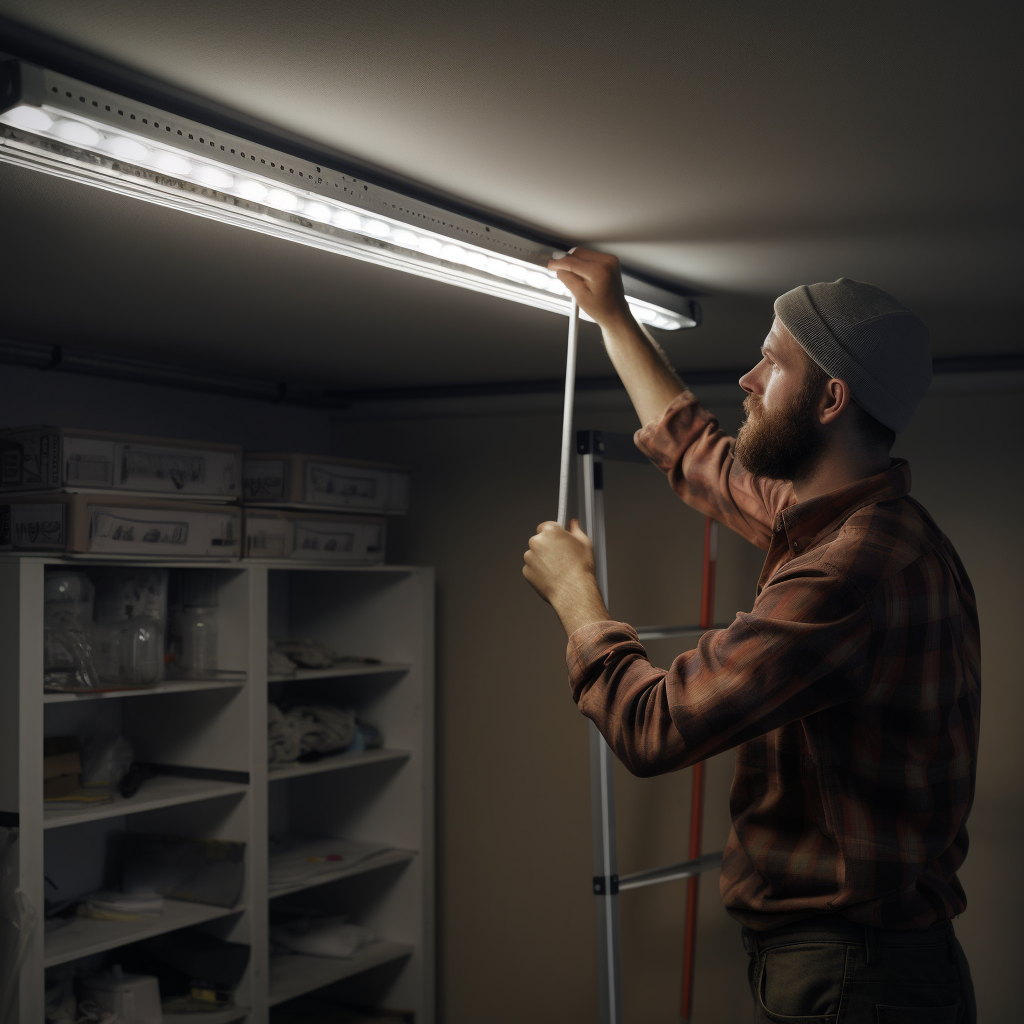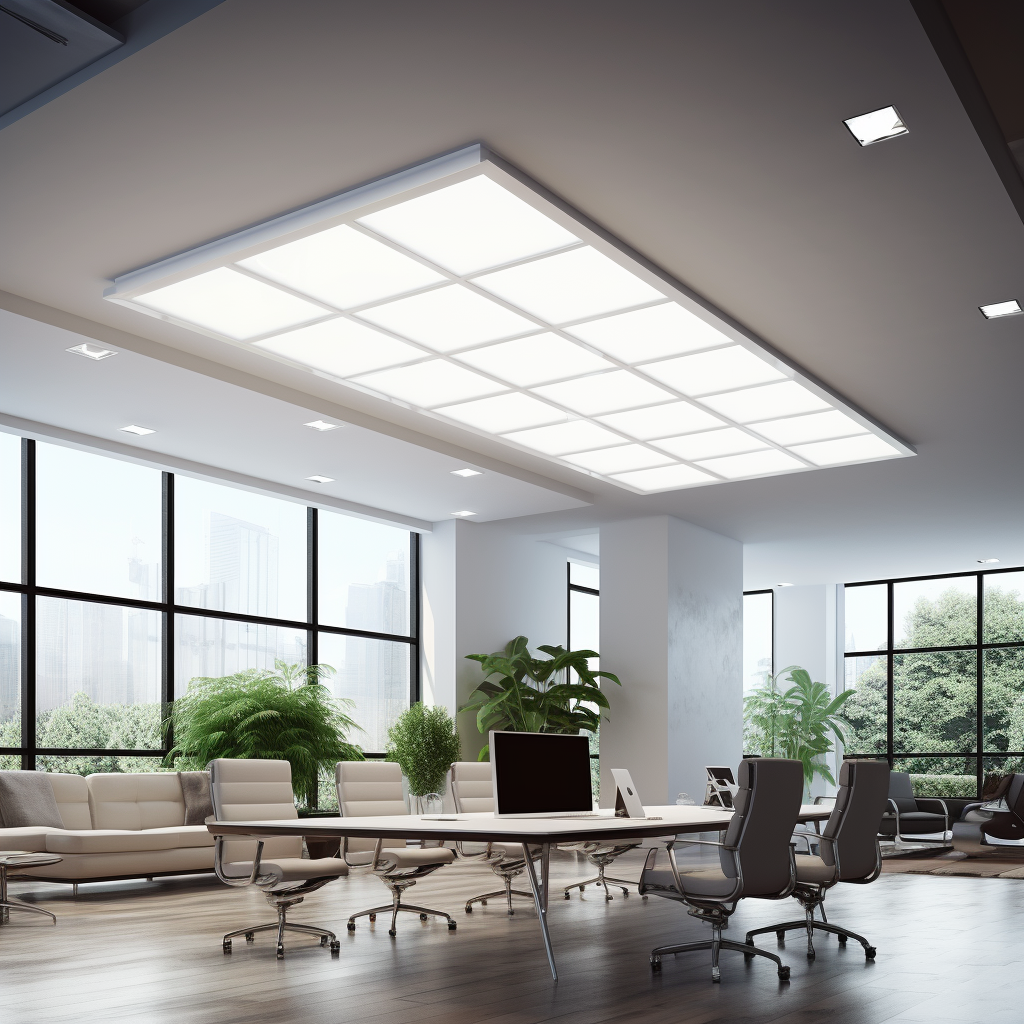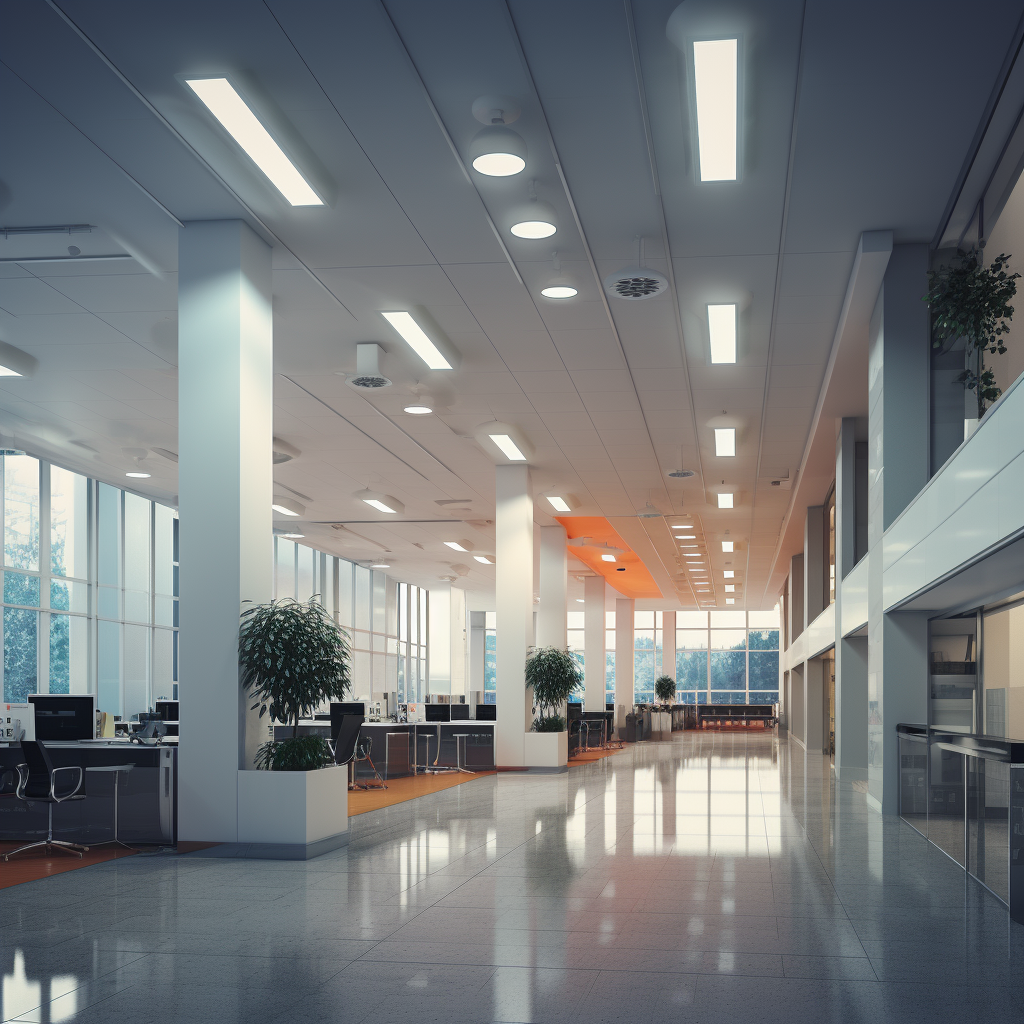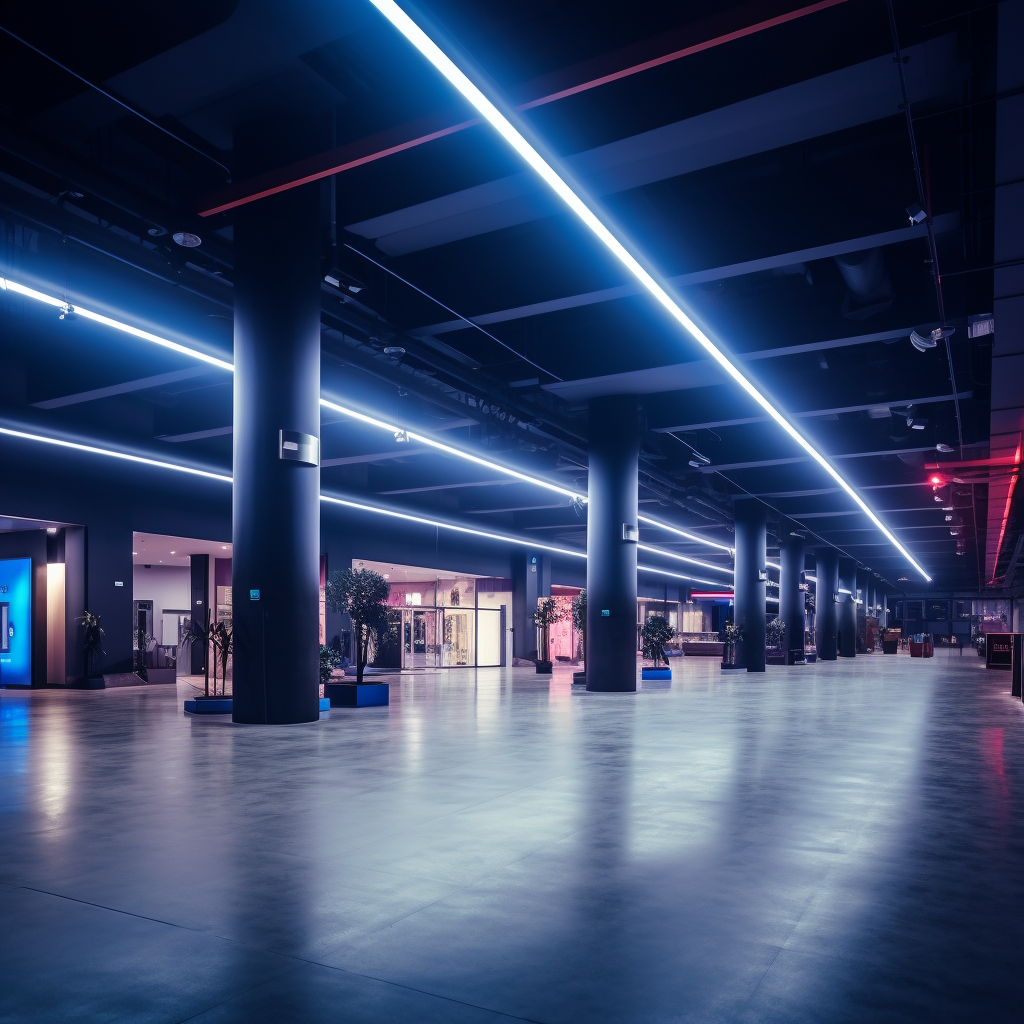Businesses across industries grapple with the inefficiencies and limitations of traditional fluorescent lighting. Energy-hungry, short-lived, and lacking in luminous prowess, fluorescent tubes cast a dim light on cost savings and environmental concerns.
The reality is stark: fluorescent lighting not only strains budgets but also contributes to unnecessary energy consumption and frequent maintenance headaches.
Enter LED, the illuminating beacon of progress. The solution lies in the seamless transition to replace fluorescent with LED.
So, how to replace fluorescent with LED lighting? You're fortunate in that there are number of ways to upgrade to LED strip, tube or bulb lighting from your existing fixtures.
Why Fluorescent to LED Conversion Is a Good Idea
Fluorescent lighting has long been a staple in industrial and commercial spaces, but with the advancements in technology, it's becoming increasingly clear that switching to LEDs offers a multitude of benefits:
- Energy Efficiency: LED bulbs are significantly more energy-efficient than fluorescent tubes. They consume at last 75% less energy, leading to reduced electricity bills and a smaller carbon footprint.
- Longer Lifespan: While fluorescents may last around 10,000 hours, LEDs improve lamp life, shining bright for up to 50,000 hours or more, resulting in fewer fluorescent LED replacements and maintenance.
- Better Light Quality: LEDs provide a higher light quality with improved color rendering and a more consistent lumen brightness. This enhances visibility and light output, creating a more comfortable and productive environment for employees.
- Instant: Unlike fluorescent bulbs that can flicker and take time to reach full brightness, LEDs light up instantly without any delays or disturbances.
- Durability: LEDs are solid-state lights, making them more robust and resistant to shock, vibrations, and extreme temperature variations, which is particularly beneficial in industrial settings.
- Customizable: Light color and intensity flexibility enables businesses to create specific lighting atmospheres that cater to different tasks or moods.
- Dimmability: Many LED lighting solutions are dimmable, giving you precise control over the level of illumination and helping further save energy when full brightness is not required.
- Reduced Heat Emission: LED lights generate significantly less heat compared to fluorescent bulbs, contributing to a cooler working environment and potentially reducing the load on air conditioning systems.
- Low UV Emissions: Fluorescent lights emit some ultraviolet (UV) radiation, while LEDs produce very minimal UV rays, making them suitable for spaces where UV-sensitive materials or products are present.
- Maintenance Savings: The extended lifespan and durability of LEDs translate to reduced maintenance costs over time, as there is less need for frequent replacements and repairs.
As we delve deeper into the process of replacing fluorescent bulbs with LED lighting solutions and the LED vs fluorescent argument, these benefits will become even more evident.
With this in mind, let's explore the steps to seamlessly transition your workspace to a more energy-efficient and modern lighting solution.

How To Replace Fluorescent With LED
While there are many ways to replace fluorescent bulbs with LED ones, the best methods are using a LED conversion management solution, retrofitting existing fixtures, replacing those fixtures with new ones, upgrading with LED panel lights, converting your light fixtures with ballasts, and leveraging government grants.
Obviously, how to change a fluorescent light to LED the right way depends entirely on your circumstances and industry.
We'll walk you through the different options shortly, but if you'd rather just get in touch with us to discuss your options, we'd be more than happy to hear from you!
1. Let us do the conversion for you!
Why is the best option? Simply that all the hassle is taken away from you, at no capital expense to your business!
FES's LED conversion management eliminates upfront costs for energy-efficient LED upgrades and gives you a rapid start. Our Lighting-as-a-Service (LaaS) approach covers installation, maintenance, and energy savings.
With over $80 million in funded upgrades, we offer capital-expenditure-free solutions, ensuring immediate energy savings, all thanks to our tried and tested simple process:
- Connect & Gather: Our energy-saving specialists assess your utility bills and site details to estimate your savings.
- Audit & Review: Thorough review of your lighting needs and goals.
- Design & Specify: Tailored LED solutions designed for your space.
- Engineer & Manufacture: State-of-the-art LED systems engineered and produced.
- Install & Upgrade: Seamless installation for a hassle-free transition, without you having to source an external electrician.
- Maintenance & Service: Ongoing maintenance for worry-free lighting.
Why our LED retrofit service?
- Capital Savings: Zero upfront investment, significant savings.
- Investment Opportunity: Redirect funds to core business activities.
- Maintenance Included: We handle the maintenance, freeing up your staff, whether you have flat ceilings, suspended grid ceilings, or anything else!
- Instant Energy Savings: LED conversion ensures reduced energy consumption and immediate savings.
2. LED fluorescent retrofit
A fluorescent to LED retrofit involves enhancing your existing fluorescent fixtures by replacing their internal components with LED-compatible ones, usually with a fluorescent light to LED conversion kit.
This approach provides a cost-effective and efficient way to upgrade to LED lighting without the need for complete fixture replacement.
Retrofit tubes (t5, t8, t12, etc.) are one of the most common replacements we see, with the process generally removing the old fluorescent tubes and ballasts, and installing LED tubes or retrofit kits that fit seamlessly into the existing fixtures.
It capitalizes on your current infrastructure while benefiting from the improved energy efficiency and longevity of LED technology.
Benefits of Retrofitting:
- Cost Savings: Using retrofit LED tubes is often more budget-friendly than replacing fixtures entirely, as it eliminates the need for new fixtures and wire upgrades.
- Minimal Disruption: Upgrading is relatively quick and involves less disruption to your workspace compared to a complete fixture replacement.
- Energy Efficiency: LED retrofit kits or tubes reduce energy consumption and operating costs, contributing to long-term savings.
- Environmental Impact: Retrofitting promotes sustainability by repurposing existing fixtures and minimizing electronic waste.
3. Replacing Fixtures
Choosing to completely replace a fluorescent light fixture involves removing the old fluorescent fixtures and installing entirely new LED fixtures designed to provide optimal performance and energy efficiency.
While this method may involve a higher upfront investment, it offers the advantage of fully capitalizing on the design and capabilities of modern LED technology.
New fixtures often come with advanced features such as integrated controls, dimming options, and improved light distribution, enhancing the overall lighting experience in your space.
Benefits of Fixture Replacement:
- Enhanced Performance: New LED fixtures provide better light quality, color consistency, and improved lighting distribution, enhancing the aesthetics and functionality of your space.
- Greater Energy Savings: LED fixtures are designed for maximum energy efficiency, resulting in substantial long-term energy and cost savings.
- Advanced Controls: Many modern LED fixtures offer advanced lighting controls, allowing you to customize lighting levels and schedules to match specific needs.
- Reduced Maintenance: New fixtures typically have longer lifespans and require less maintenance compared to older fluorescent options.
4. Upgrading with LED Panel Lights:
LED panel lights offer a sleek and contemporary alternative for replacing traditional fluorescent troffers commonly found in commercial and industrial settings.
These flat and thin panels provide uniform illumination and reduce glare, creating a visually appealing and comfortable lighting environment.
Upgrading to LED panel lights involves removing the old fluorescent troffers and installing the LED panels in their place, not only enhancing lighting quality but also bringing energy efficiency and aesthetic improvements to your space.
Benefits of Upgrading with LED Panel Lights:
- Modern Aesthetics: LED panels provide a sleek and modern appearance, improving the overall visual appeal of your space.
- Uniform Lighting: Panel lights offer even and consistent illumination, reducing shadows and enhancing visibility.
- Energy Efficiency: They consume less energy and offer longer lifespans compared to fluorescent troffers, resulting in significant energy and maintenance savings.
- Flexibility: LED panels often come in various color temperatures and dimming options, allowing you to tailor the lighting to specific tasks or preferences.

5. LED replacement for Fluorescent Tubes: With and Without Ballasts
When transitioning from fluorescent to LED lighting, you have choices regarding the utilization of ballasts – those small devices that regulate the flow of electricity to the bulbs.
Understanding the options with and without ballasts can help you make an informed decision for a seamless and efficient upgrade.
Retrofitting with Ballasts:
Retrofitting your existing fluorescent fixtures with LED tubes that are compatible with ballasts is a common approach and involves simply removing the old fluorescent tubes and replacing them with compatible LED tubes.
The ballast remains in place and continues to regulate the electrical current to the new LED tubes.
Pros:
- Faster and easier installation.
- Minimal disruption to your workspace.
- Cost-effective as it eliminates the need to replace or rewire ballasts.
Cons:
- Ballasts still consume some energy, potentially reducing overall energy savings.
- The ballasts may eventually fail, requiring future maintenance.
Ballast Bypass
Opting to bypass the ballasts involves removing the existing ballasts and rewiring the fixtures to directly connect to the main power supply. LED replacement tubes that are designed for direct-wire installation are used in this method, and we can even replace your old bulbs with magnetic strips.
Pros:
- Maximizes energy savings by eliminating ballast power consumption.
- Reduces long-term maintenance as ballasts are removed.
- Increases overall system efficiency.
Cons:
- Installation may be more involved and time-consuming.
- Requires new wires, potentially leading to increased upfront costs.
Deciding between these options depends on your specific goals and circumstances. If you're looking for a quicker and simpler upgrade, retrofitting with ballasts might be suitable. On the other hand, bypassing ballasts offers greater energy savings and efficiency in the long run.
Either way, we highly recommend you consult with us so we can help you make the ideal choice for your circumstances!
6. Exploring Grants for Fluorescent to LED Conversion
Even though we offer a zero capex outlay through our service, LED grants for business can significantly offset the cost of transitioning from fluorescent to LED lighting in industrial and commercial settings.
They're designed to promote energy efficiency, reduce carbon emissions, and support businesses in adopting environmentally-friendly practices.
Let's delve into how you can leverage government grants to make your LED lighting upgrade even more cost-effective:
Energy Efficiency Programs
Many local, state, and national governments offer energy efficiency programs that provide financial incentives for businesses to upgrade to LED lighting.
These programs may offer cash rebates, tax credits, or low-interest loans to help cover the upfront costs of purchasing and installing LED lighting solutions.
Research the available programs in your region to determine eligibility and application procedures.

Utility Rebate Programs
Utility companies often collaborate with governments to offer rebate programs that encourage businesses to adopt energy-efficient technologies.
These rebates can significantly reduce the overall cost of your LED lighting project. Reach out to your local utility company to inquire about any available rebates for transitioning from fluorescent to LED lighting.
Federal and State Tax Incentives
Governments at the federal and state levels may provide tax incentives for energy-efficient upgrades. These incentives can include tax deductions, credits, or accelerated depreciation for LED lighting investments.
Consult with a tax professional or financial advisor to understand how these incentives can benefit your business.
Energy Audits and Consulting Services
Some government programs offer free or subsidized energy audits and consulting services, which can help you assess your current lighting system's energy consumption, identify potential savings, and guide you in selecting the most suitable LED lighting solutions.
Taking advantage of these services can lead to a more informed and strategic LED conversion. But, don't forget that we carry out an energy audit as part of our consultation with you!
Industry-Specific Grants
Certain industries or sectors may have specialized grant programs aimed at encouraging energy-efficient practices.
Research industry associations, trade groups, and government websites to identify any grants specifically tailored to your business type.
How to convert fluorescent to LED with FES lighting
Elevate your lighting system effortlessly with Future Energy Solutions, your partner in revitalizing outdated lighting fixtures into energy-efficient LED solutions.
Our comprehensive approach encompasses diverse types of commercial lighting fixtures:
- Incandescent: Replace energy-intensive incandescent bulbs with modern, efficient LED alternatives for superior illumination and cost savings.
- Halogen: Upgrade halogen fixtures to LED for improved light quality, reduced heat emission, and longer-lasting performance.
- Fluorescent: Transform fluorescent lighting into energy-efficient LED systems offering better color rendering, instant illumination, and long-term savings.
- Induction: Transition from induction lighting to LED for enhanced energy efficiency, better control, and reduced maintenance needs.
- Metal Halide: Replace metal halide fixtures with LED for better light quality, faster startup times, and significant energy savings.

No matter your current fixtures, our tailored approach is designed to cater to various sectors, ensuring a seamless conversion process for every business type:
- Restaurants: Create inviting and well-lit dining spaces that enhance the overall ambiance while reducing operational costs.
- Hotels: Elevate guest experiences by upgrading to energy-efficient LED lighting that provides superior illumination and a welcoming atmosphere.
- Prisons: Ensure secure and well-lit environments with our advanced LED solutions, contributing to safety and cost savings.
- Classrooms: Optimize learning environments by transitioning to LED lighting that enhances focus, reduces glare, and minimizes energy consumption.
- Warehouses & Factories: Improve visibility and operational efficiency in industrial spaces through LED lighting that enhances safety and productivity.
- Aircraft Hangars: Illuminate expansive aircraft hangars with powerful LED solutions that provide optimal visibility and energy savings.
- Car Dealerships: Showcase vehicles with vibrant LED lighting, creating an appealing sales environment and reducing energy expenses.
- Parking Garage Structures: Enhance safety and security in parking facilities with well-lit LED solutions that minimize energy usage.
- Hospitals: Foster a healing environment with LED lighting that enhances patient comfort, staff efficiency, and energy efficiency
At FES, we're committed to enhancing your lighting experience while reducing energy costs. Whatever your industry, our tailored solutions will meet your unique requirements.
Contact us today for a free consultation and embark on the journey to a brighter, more sustainable future.
Additional reading: lumens to watts conversion chart
LED fluorescent replacement FAQs
Can you replace fluorescent tubes with LED tubes?
Yes, you can replace your fluorescent tubes with LED tube lights. This conversion involves removing the old fluorescent tubes and replacing them with compatible LED tubes and wire upgrades, if needed. It's a cost-effective way to upgrade your lighting system for improved energy efficiency and better light quality.
Can you put LED bulbs in fluorescent fixtures?
Yes, you can put LED bulbs in fluorescent lighting fixtures. This involves removing the fluorescent tubes and installing LED lights designed to fit the same sockets. It's a convenient way to transition to LED technology while utilizing your existing fixtures and achieving energy savings.



%20(1).png?width=1080&height=1080&name=FES-Ebook-1%20(1)%20(1).png)